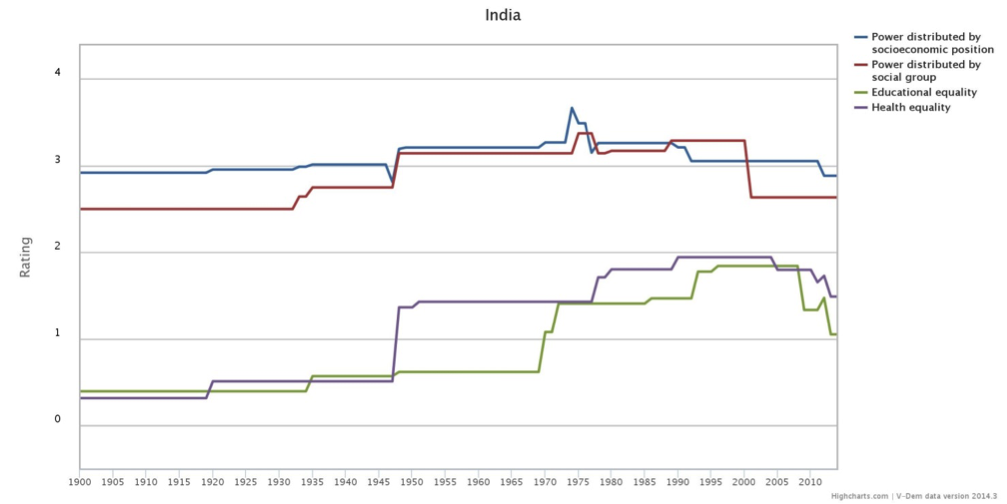Egalitarian Democracy in India
By: V-Dem Staff
Dec 04, 2015
The two indicators reflecting the lowest level of democratic development of the are educational equality and health equality. In the beginning of the century until the late 1940s in terms of health equality and until the 1970s in regards to educational equality, the
V-Dem data suggests that because of poor provision of high-quality healthcare and education, at least 75% of the Indian citizens could not exercise their basic political rights. On these two indicators India receives the highest scores in its history in the 1970s. However, the levels for both measures do not cross the middle of the scale, which suggests that because of poor-quality healthcare and education, around 25 percent of the Indian citizens’ ability to exercise their rights is still undermined. In addition, both measures are showing signs of significant decline in more recent years.
In terms of power distributed by socioeconomic position and social group the country demonstrates more or less steady levels across time, with scores around 3 for the former and, after a decline, around the year of 2000 between 2 and 3 in terms of the latter. The data indicate that in India, wealthy people have more political power than others, but people of average or low income do have some degree of influence. In terms of power distribution by social group, several social groups (defined by caste, ethnicity, language, race, region, religion or some combination thereof) have more power than others.


